For Black History Month in February 2022, we called upon our friend, Bellingham poet and writer, Robert Lashley to help us create a series of playlists on Freegal, the library’s free streaming music platform. We called the series: Black Music in America and covered the years from 1899 to the present, exploring the roots and branches, the influences and innovations that are all a part of the journey of Black music in America.
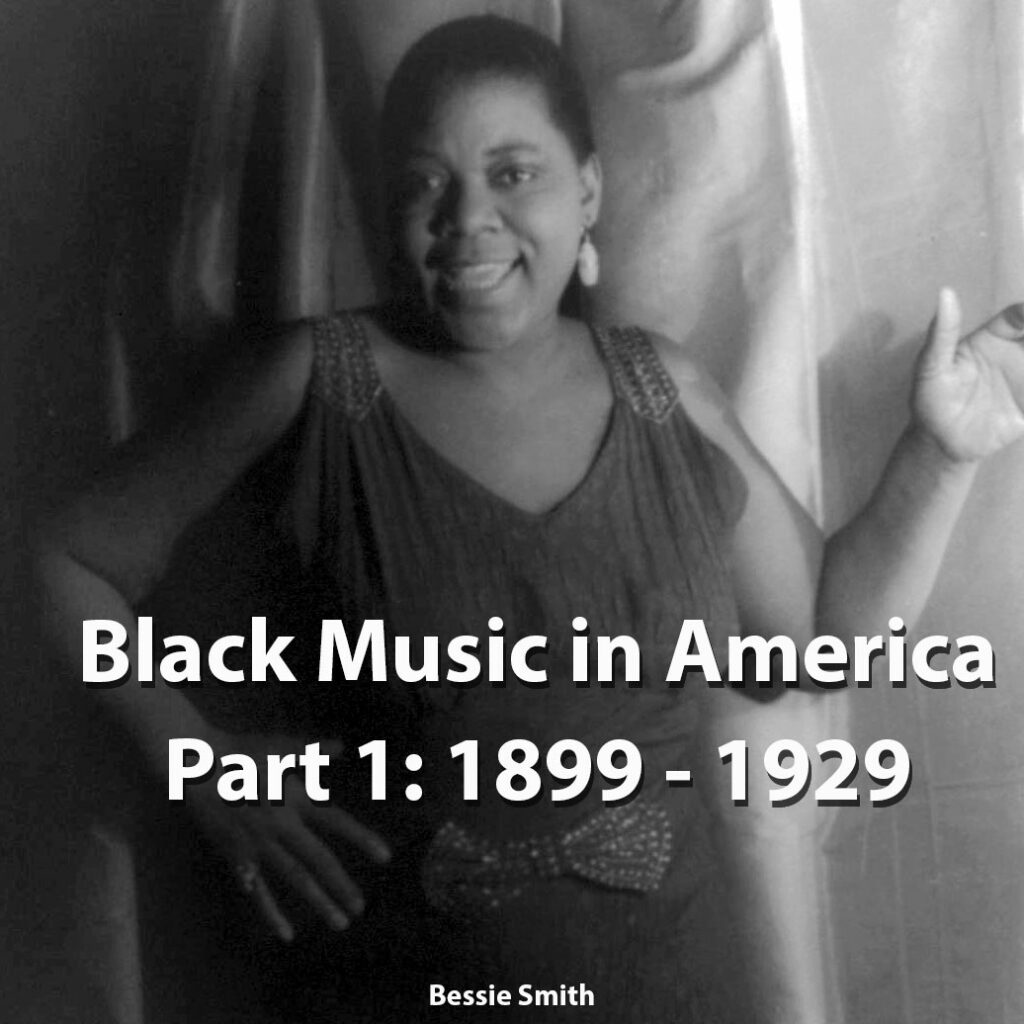
16 Songs 52 min 47 sec
This first playlist includes gospel, ragtime, jazz and the blues. Many songs in this list have stood the test of time and have been recorded by singers in every decade.
Artists: The Fisk Jubilee Singers
Charleston Rag
Artists: Eubie Blake
Wade in the Water
Artists: Lincoln Four Quartette
The Entertainer (A Ragtime Two Step)
Artists: Scott Joplin
Maple Leaf Rag
Artists: Scott Joplin
A Real Slow Rag (Excerpt from “Treemonisha”)
Artists: Scott Joplin
St. Louis Blues
Artists: W.C. Handy
Crazy Blues
Artists: Mamie Smith
You Can’t Keep a Good Man Down
Artists: Mamie Smith
Sometimes I Feel Like A Motherless Child
Artists: Paul Robeson
Sweetheart O’ Mine
Artists: Jelly Roll Morton
East St. Louis Toodle-Oo
Artists: Duke Ellington & His Washingtonians
A Good Man Is Hard to Find
Artists: Bessie Smith
Nobody Knows You When You’re Down and Out (78rpm Version)
Artists: Bessie Smith
Ain’t Misbehavin’
Artists: Fats Waller
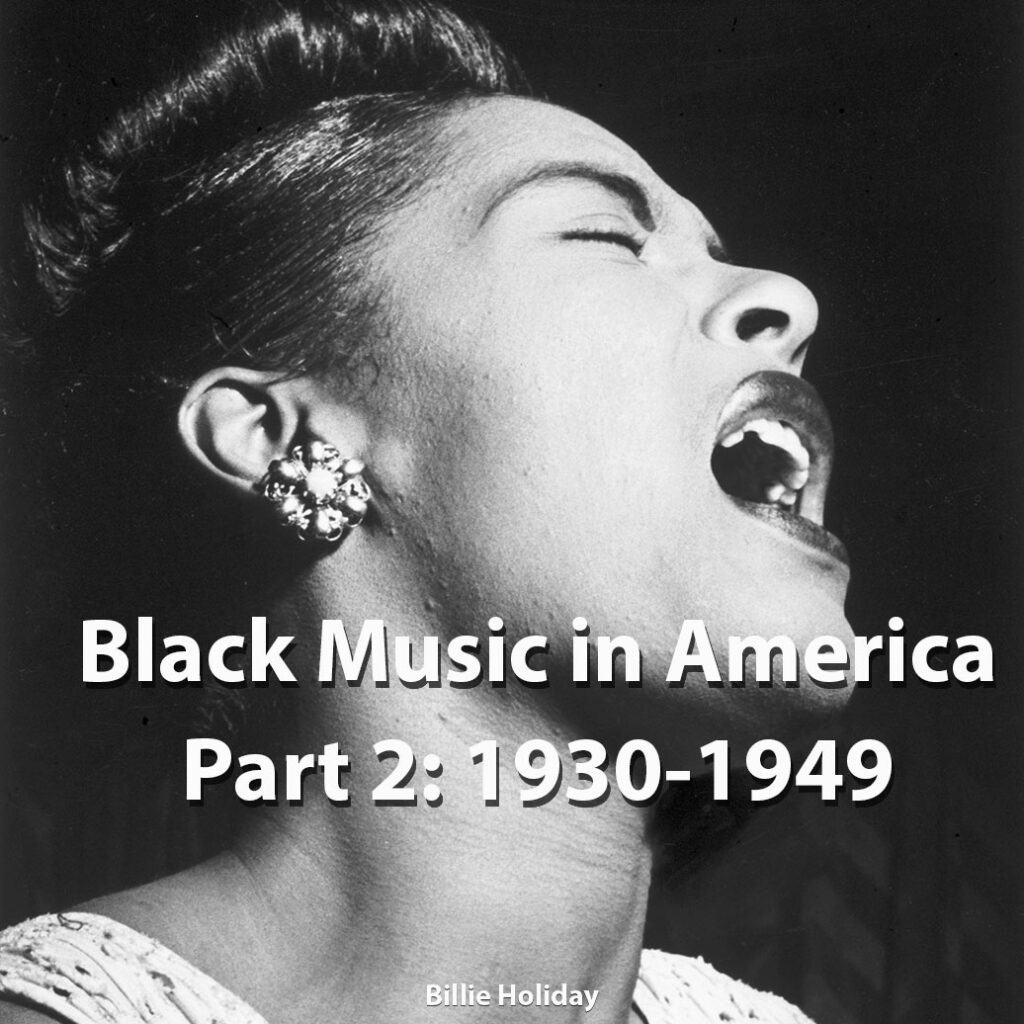
29 Songs 01 hr 26 min 09 sec
Child Asleep
Artists: Florence Price, Lara Downes
The Hour Glass
Artists: Alan Morrison, Florence Price
Please Don’t Talk About Me When I’m Gone
Artists: Ethel Waters
Heat Wave (From “A Thousands Cheer”)
Artists: Ethel Waters
Tiger Rag (1934 Version)
Artists: Mills Brothers
Honeysuckle Rose
Artists: Fats Waller
Summertime
Artists: Billie Holiday & Her Orchestra
Sweet Home Chicago
Artists: Robert Johnson
Hell Hound on My Trail
Artists: Robert Johnson
I Will Move On Up a Little Higher
Artists: Mahalia Jackson
One O’Clock Jump
Artists: Count Basie
Sometimes I Feel Like a Motherless Child
Artists: Count Basie
When the Saints Go Marching In
Artists: Louis Armstrong
This Train
Artists: Sister Rosetta Tharpe
America (My Country, ‘Tis of Thee) [Live at Lincoln Memorial]
Artists: Traditional, Marian Anderson, Kosti Vehanen
Them There Eyes
Artists: Billie Holiday
Strange Fruit
Artists: Billie Holiday
God Bless the Child
Artists: Billie Holiday
Take the ‘A’ Train
Artists: Duke Ellington
Salt Peanuts
Artists: Dizzy Gillespie
Stormy Weather
Artists: Lena Horne
Straighten Up & Fly Right
Artists: Nat King Cole Trio
Down by the Riverside
Artists: Sister Rosetta Tharpe
Yardbird Suite
Artists: Charlie Parker
Ornithology
Artists: Charlie Parker Septet
Choo Choo Ch’boogie
Artists: Louis Jordan
Hound Dog
Artists: Big Mama Thornton
Nature Boy
Artists: Nat King Cole
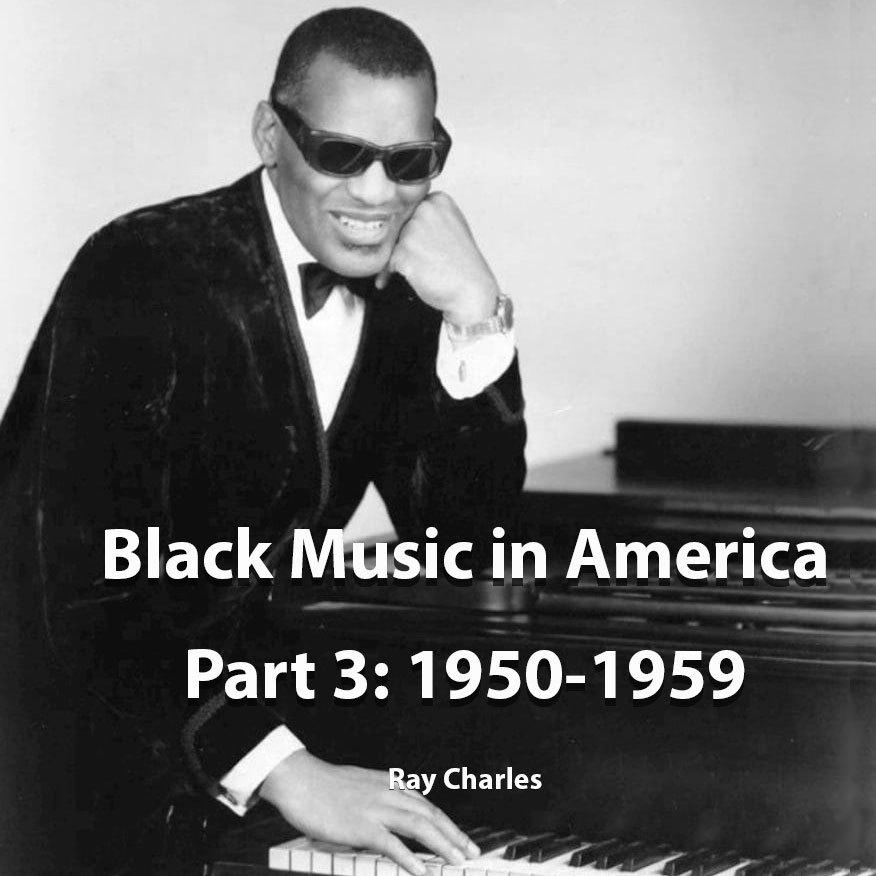
24 Songs 01 hr 26 min 08 sec
Muddy Waters sings a bluesy rebuke to the racist term “Boy,” while B.B. King wails out his own blues. Fats Domino and Chuck Berry turn the corner from Rhythm and Blues into Rock & Roll while Thelonious Monk and Miles Davis keep jazz alive. Ballads, Gospel, Calypso and Folk are heard on the radio everywhere, while Sam Cooke creates a soulful sound of his own. The decade ends with two party tunes which clearly came straight out of the church.
Something is forming during these years that will come to a head very soon.
Artists: Eartha Kitt
I Just Want to Make Love to You
Artists: Muddy Waters
Mannish Boy
Artists: Muddy Waters
Bo Diddley
Artists: Bo Diddley
Bewitched, Bothered and Bewildered
Artists: Lena Horne
Every Day I Have the Blues
Artists: B. B. King
Ain’t That a Shame
Artists: Fats Domino
Blueberry Hill
Artists: Fats Domino
You Can’t Catch Me
Artists: Chuck Berry
Bye Bye Blackbird
Artists: Miles Davis
Take My Hand Precious Lord
Artists: Mahalia Jackson
Day-O (The Banana Boat Song)
Artists: Harry Belafonte
‘Round Midnight
Artists: Miles Davis
Take This Hammer
Artists: Odetta
You Send Me
Artists: Sam Cooke
All of Me
Artists: Dinah Washington
Thelonious, Henry & Roy
Artists: Thelonious Monk
Smoke Gets in Your Eyes
Artists: Eartha Kitt, Henri René
Sweet Little Sixteen
Artists: Chuck Berry
It Ain’t Necessarily So
Artists: Lena Horne
Tricky Fingers
Artists: Eubie Blake
What’d I Say Pt. 1 & 2
Artists: Ray Charles
Shout, Pts. 1 & 2
Artists: The Isley Brothers
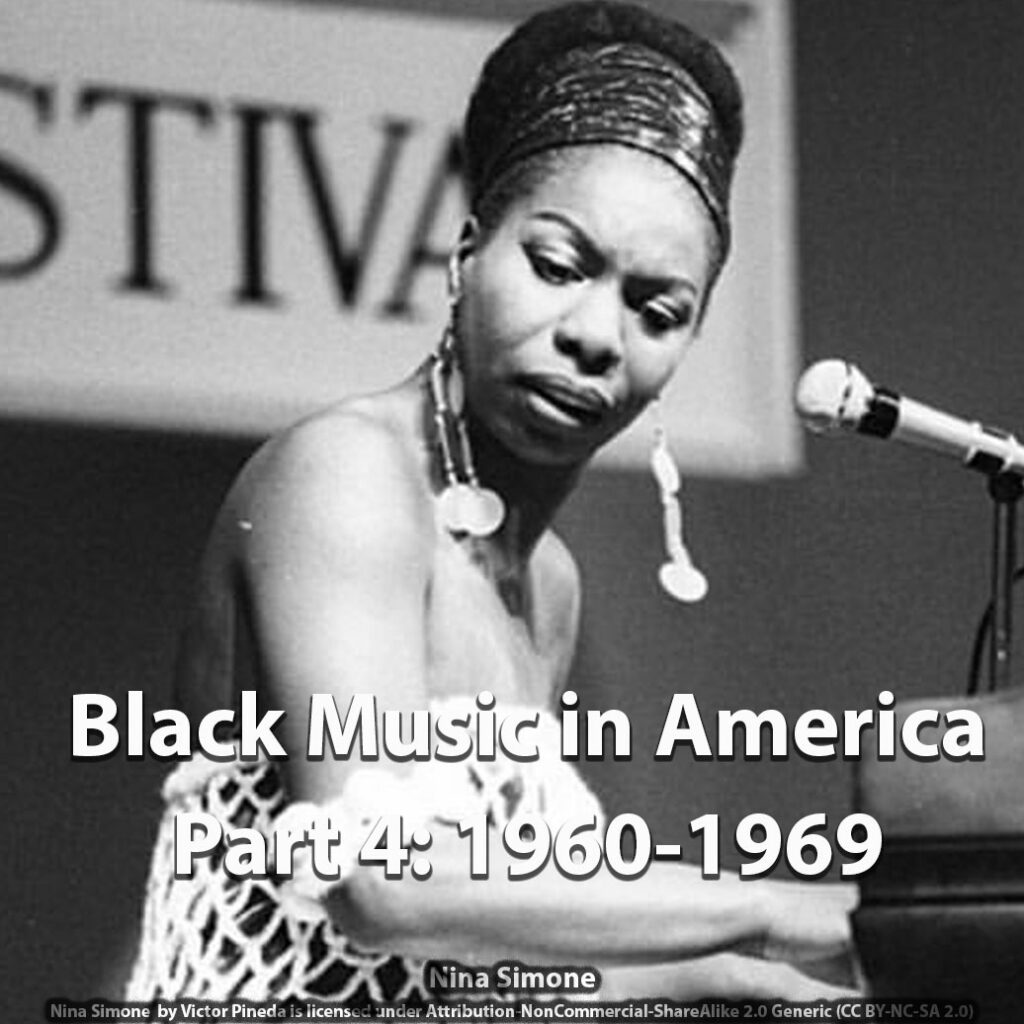
31 Songs 02 hr 00 min 45 sec
John Lee Hooker and B. B. King dig deep into their roots to bring the Delta blues to audiences while Ray Charles crosses over to country and western music with two best-selling albums. Louis Armstrong dives into show tunes with his distinctive trumpet and voice, creating his iconic “Hello Dolly.”
Meanwhile, Sam Cooke and Chuck Berry take separate paths to musical success. Rhythm & Blues and Rock & Roll, both changing the world of music as radio stations picked up their 45s.
But on small town streets all over America, Cooke knows a change is gonna come. His anthemic song of that name pulls the power of gospel music into pop radio, as so many Black artists before and after him have done. Back to back in the top 40 playlists are love songs and spiritual songs, feel good tunes and anti-racist anthems, Ike and Tina Turner followed by The Edwin Hawkins Singers. “Everyday People” and “Dancin’ in the Streets”…
And then on April 4, 1968, The Reverend Dr. Martin Luther King, Jr., “The King of Love” as Nina Simone crowned him, is killed in Memphis. And the dream is deferred. The music continued, both spiritual and pop, but this atomic bomb, dropped on the causes of freedom and equality, may have caused a rift between those who stayed the musical course and those too haunted by the moment. The ‘70s are on the horizon.
A Hole In The Bucket
Artists: Harry Belafonte & Odetta
I Just Want to Make Love to You
Artists: Etta James
Please Mr Postman
Artists: The Marvelettes
Chain Gang
Artists: Sam Cooke
Mack the Knife
Artists: Ella Fitzgerald
Boom Boom Boom
Artists: John Lee Hooker
You Don’t Know Me
Artists: Ray Charles
Bring It On Home to Me
Artists: Sam Cooke
How Blue Can You Get
Artists: B.B. King
Hello Dolly
Artists: Louis Armstrong
No Particular Place to Go
Artists: Chuck Berry
My Girl
Artists: The Temptations
A Change Is Gonna Come
Artists: Sam Cooke
Dancing In The Street
Artists: Martha Reeves & The Vandellas
People Get Ready
Artists: The Impressions
Tell It Like It Is
Artists: Aaron Neville
Wade In The Water (Album Version)
Artists: The Staple Singers
Reach Out I’ll Be There
Artists: Four Tops
River Deep, Mountain High
Artists: Ike & Tina Turner
What A Wonderful World
Artists: Louis Armstrong
Everyday People
Artists: Sly & The Family Stone
Oh Happy Day (Summer of Soul Soundtrack – Live at the 1969 Harlem Cultural Festival)
Artists: The Edwin Hawkins Singers
Why? (The King of Love Is Dead) (Live at Westbury Music Fair, Westbury, NY – April 1968)
Artists: Nina Simone
Mississippi Goddam (Live at Westbury Music Fair, Westbury, NY – April 1968)
Artists: Nina Simone
You’re All I Need to Get By
Artists: Marvin Gaye, Tammi Terrell
It’s Your Thing
Artists: The Isley Brothers
Freedom (Extended Live Version)
Artists: Richie Havens
Wedding Bell Blues (Single Version)
Artists: The 5th Dimension
Precious Lord, Take My Hand (Summer of Soul Soundtrack – Live at the 1969 Harlem Cultural Festival)
Artists: The Operation Breadbasket Orchestra & Choir feat. Mahalia Jackson and Mavis Staples
Aquarius / Let the Sunshine In (The Flesh Failures)
Artists: The 5th Dimension
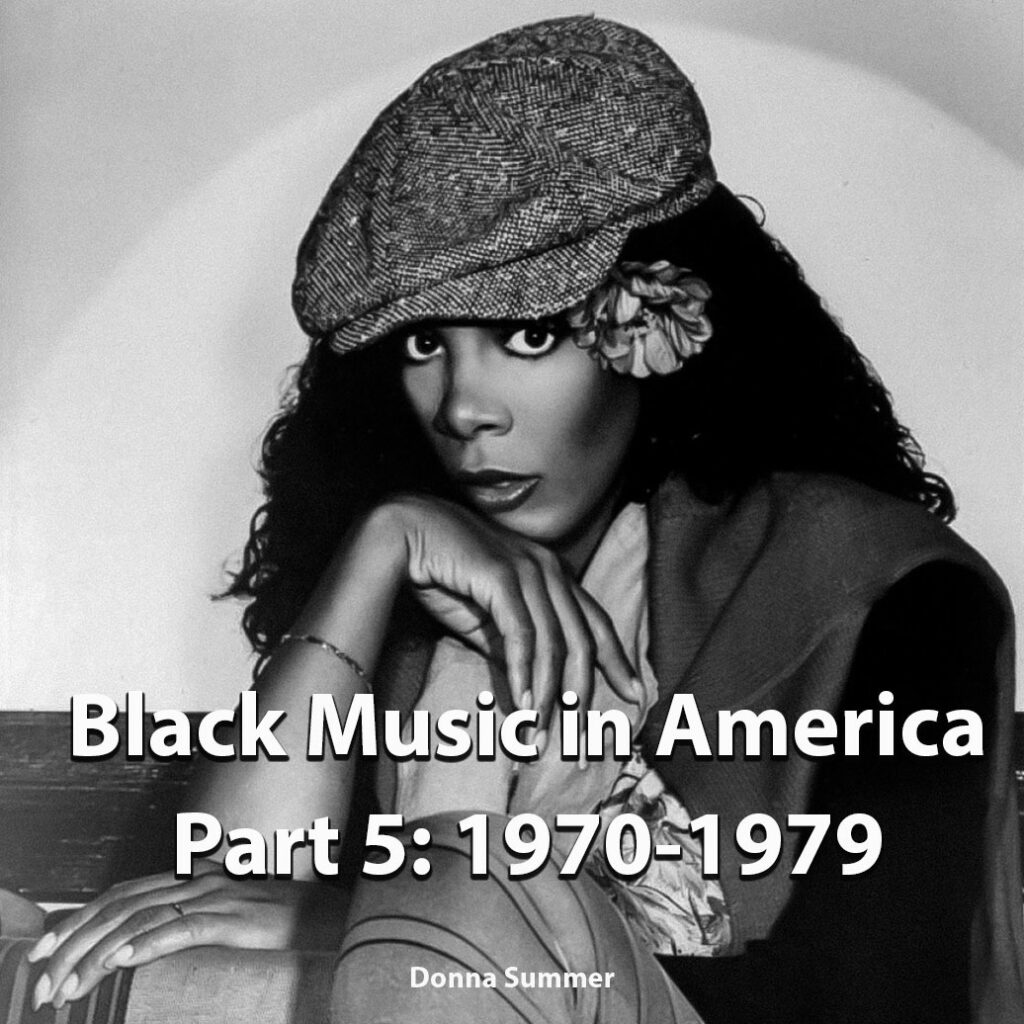
23 Songs 01 hr 43 min 09 sec
While the counter-culture still existed in the form of Gil Scott-Heron’s “The Revolution Will Not Be Televised” “covered here by Patti LaBelle’s group, LaBelle), an alternative movement that embraced fashion, sexual liberation, dance and drugs was rising fast and by the end of the ‘70s, the four-on-the-floor beat of disco was popular across the US and around the world. While the fast-growing, all encompassing growth of disco was due, in great part, to the state of the business of music and radio, the talent of musicians such as singers Gloria Gaynor and Donna Summer and producer Nile Rogers (Chic) should not be underestimated. As the ‘80s approach, we were embracing the “Last Dance,” the last chance for romance tonight.
Ain’t No Sunshine
Artists: Bill Withers
Proud Mary
Artists: Ike & Tina Turner
Let’s Stay Together
Artists: Al Green
What’s Going On (Live)
Artists: Marvin Gaye
Lean on Me
Artists: Bill Withers
Love Train
Artists: The O’Jays
Back Stabbers
Artists: The O’Jays
Nobody Loves Me But My Mother
Artists: B.B. King
Papa Was a Rolling Stone
Artists: The Temptations
Love and Happiness
Artists: Al Green
I’ve Got to Use My Imagination
Artists: Gladys Knight & The Pips
Take Me to the River
Artists: Al Green
Wake Up Everybody
Artists: Harold Melvin & The Blue Notes feat. Teddy Pendergrass
Something in the Air / The Revolution Will Not Be Televised
Artists: LaBelle
Shining Star
Artists: Earth, Wind & Fire
Lady Marmalade
Artists: LaBelle
Soon and Very Soon
Artists: Andrae Crouch & The Disciples
Serpentine Fire
Artists: Earth, Wind & Fire
The Greatest Love of All
Artists: George Benson
I Will Survive
Artists: Gloria Gaynor
Bad Girls
Artists: Donna Summer
Last Dance
Artists: Donna Summer
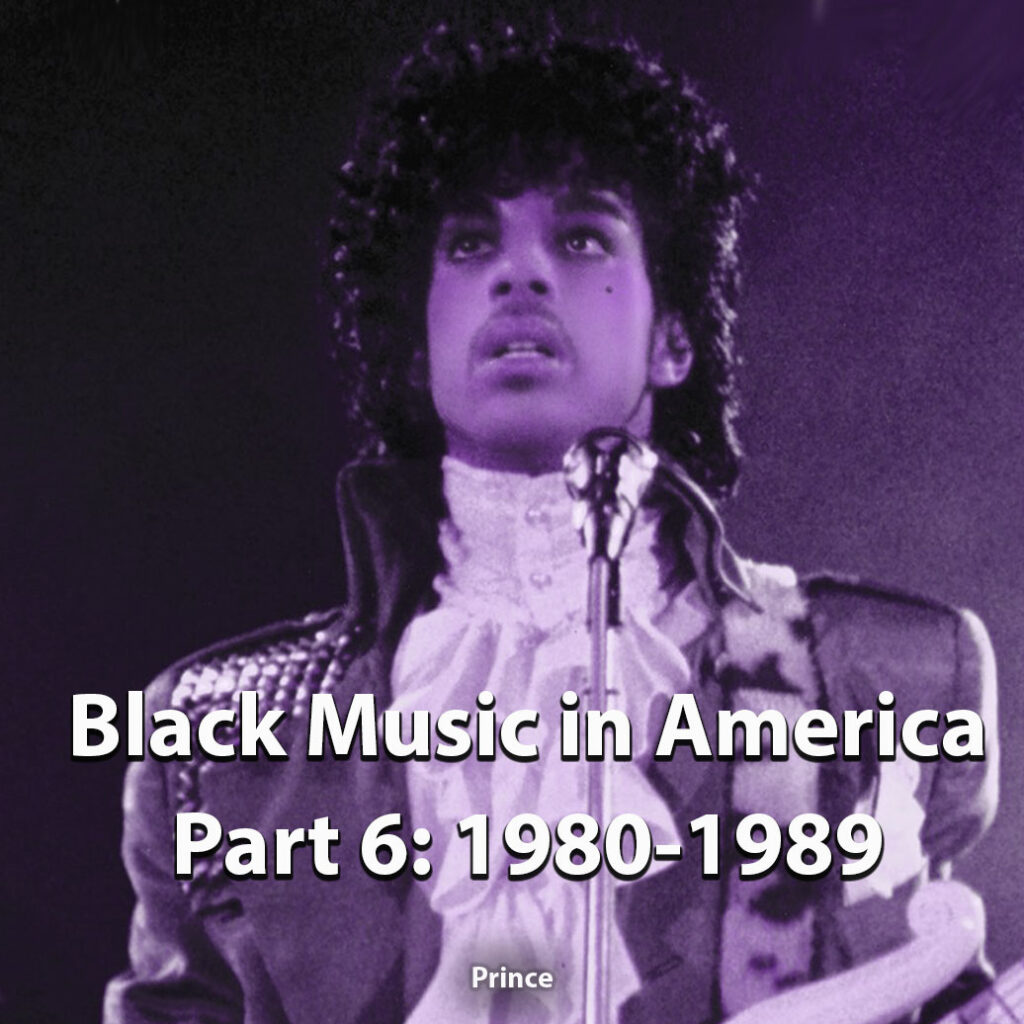
21 Songs 01 hr 38 min 52 sec
But there WAS an audience for Rap and Hip-hop, and music industry leaders soon found out that this genre was profitable. Suddenly, artists like Run-DMC, Grandmaster Flash & the Furious Five and Salt’n’Pepa were getting airplay across the country. Meanwhile R&B artists like Luther Vandross and Aretha Franklin were still going strong. The Pointer Sisters, who had struggled for recognition throughout the 1970s, were suddenly all over the airwaves and a young pop singer named Whitney Houston hit the ground running with a debut album that spent 14 weeks at No. 1 on the Billboard 200. Houston had seven No. 1 singles on Billboard’s Hot 100 in her first two years.
As the eighties ended, other musical movements were on the rise. The “Seattle Sound” of Grunge was bringing its distortion pedals and raspy white male voices to the front of the room while female singer-songwriters were getting attention again. Among the folky singer-songwriters was Tracy Chapman, a socially conscious Black artist whose hit song, “Fast Car,” spoke to her generation and carried a timeless sadness that recalls previous generations of Black female singers.
Super Freak
Artists: Rick James
Sexual Healing
Artists: Marvin Gaye
Since I Lost My Baby
Artists: Luther Vandross
1999 (Edit)
Artists: Prince
The Message (Re-Recorded / Remastered)
Artists: Grandmaster Flash and The Furious Five
Little Red Corvette
Artists: Prince
Billie Jean
Artists: Michael Jackson
Flashdance… What A Feeling
Artists: Irene Cara
Purple Rain
Artists: Prince and The Revolution
Jump
Artists: The Pointer Sisters
Let’s Go Crazy
Artists: Prince and The Revolution
The Glamorous Life (Re-Recorded)
Artists: Sheila E
It’s Tricky
Artists: RUN DMC
Freeway Of Love
Artists: Aretha Franklin
Greatest Love of All
Artists: Whitney Houston
Push It (Re-Recorded)
Artists: Salt N’ Pepa
Here and Now
Artists: Luther Vandross
Cult of Personality
Artists: Living Colour
Lean on Me
Artists: Club Nouveau
Fast Car
Artists: Tracy Chapman
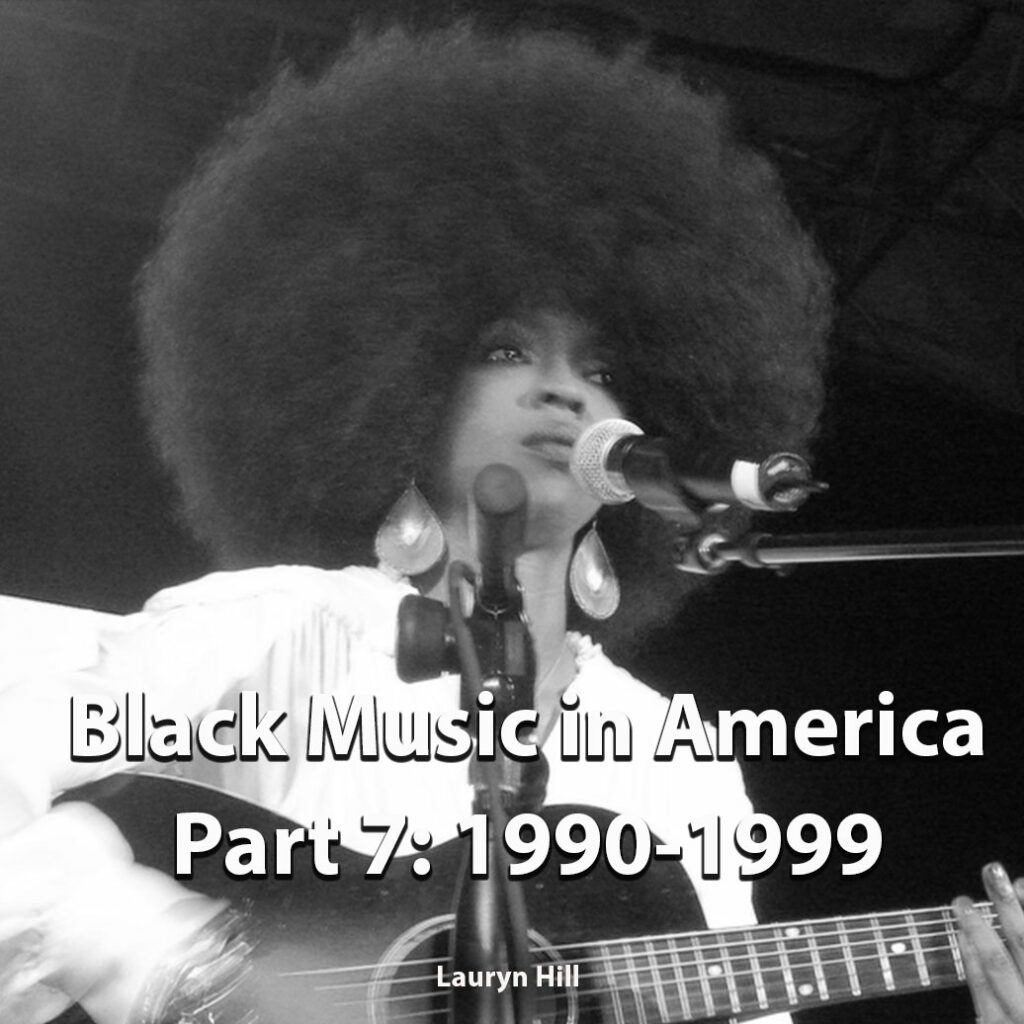
14 Songs 01 hr 06 min 16 sec
Meanwhile Black female artists described an arc of heartbreak in song. But as the ‘90s wore on, the songs that rose to the top were about empowerment. “Let’s love ourselves and we can’t fail,” sings Lauryn Hill, “after winter must come spring.”
As we close out that difficult decade, we do see spring on the horizon and we know that a rose is still a rose and Aretha is still Aretha.
Gonna Make You Sweat (Everybody Dance Now)
Artists: C+C Music Factory feat. Freedom Williams
Jazz (We’ve Got) (Explicit)
Artists: A Tribe Called Quest
Rebel Without A Pause
Artists: Public Enemy
Summertime
Artists: DJ Jazzy Jeff & The Fresh Prince
I’ll Be There (Live at MTV Unplugged, Kaufman Astoria Studios, New York – March 1992)
Artists: Mariah Carey feat. Trey Lorenz
Waterfalls
Artists: TLC
No Ordinary Love
Artists: Sade
Right Here (Human Nature Radio Mix)
Artists: SWV
Stomp
Artists: Gods Property
Killing Me Softly with His Song
Artists: Fugees, Ms. Lauryn Hill
If I Ruled the World (Imagine That)
Artists: Nas feat. Lauryn Hill
Un-Break My Heart
Artists: ” target=”_blank”Toni Braxton
Everything Is Everything
Artists: Lauryn Hill

24 Songs 01 hr 32 min 59 sec
While Usher and Miguel are raking it in with singing smooth love songs, Jazmine Sullivan is busting windows and Beyonce, having outgrown both her old band and immature lovers, is dealing out another anthem for all the single ladies.
Solange describes beautifully how man-made progress and construction cranes disrupt the peace she seeks in physical distractions, while Leon Bridges pulls out an acoustic guitar and an answer in a simple gospel song that reminds us of the roots of American Black music. Meanwhile Jidenna tries one more time to summon a macho front in Chief Don’t Run, but is he speaking to his enemy or himself when he says “welcome to your burial?”
As we come closer to the culmination of our review of Black music in America, Childish Gambino pulls it all together in an amazing history of the Black experience in America using symbolism, both aurally and in the powerful accompanying video, a must see if you want to feel his full message. Following This Is America, we look to Queen Bey to bring us some hope. “I’mma keep running, cause a winner don’t quit on herself,” she tells us in Freedom. Sounds of Blackness brings us to current day with a stirring choral rendition of Black Lives Matter which confronts us with contemporary words and phrases pulled from recent headlines and a lesson in Black American history.
It seems only fitting to bring Beyonce back for a benediction, singing a hymn first performed in 1900, and here, performed live at her 2019 “Homecoming” concert, a message for everyone, Lift Ev’ry Voice and Sing:
Lift every voice and sing
Till earth and heaven ring,
Ring with the harmonies of Liberty;
Let our rejoicing rise
High as the listening skies,
Let it resound loud as the rolling sea.
Sing a song full of the faith that the dark past has taught us,
Sing a song full of the hope that the present has brought us.
Facing the rising sun of our new day begun,
Let us march on till victory is won.
– James Weldon Johnson & J. Rosamond Johnson
It’s Love
Artists: Jill Scott
Bills, Bills, Bills (#1’s Edit)
Artists: Destiny’s Child
Survivor
Artists: Destiny’s Child
If I Ain’t Got You
Artists: Alicia Keys feat. Usher
Wish I Didn’t Miss You
Artists: Angie Stone
Ain’t Nobody Worryin’
Artists: Anthony Hamilton
Early
Artists: Run The Jewels, BOOTS
Irreplaceable
Artists: Beyoncé
This Land is Your Land
Artists: Sharon Jones & The Dap-Kings
Bust Your Windows
Artists: Jazmine Sullivan
Single Ladies (Put a Ring on It)
Artists: Beyoncé
Here I Stand
Artists: Usher
Under Control (Explicit)
Artists: The Internet
Back to the Future (Part II)
Artists: D’Angelo and The Vanguard
Money (Explicit)
Artists: Leikeli47
Cranes in the Sky
Artists: Solange
River
Artists: Leon Bridges
Chief Don’t Run (Explicit)
Artists: Jidenna feat. Roman GianArthur
This Is America (Explicit)
Artists: Childish Gambino
Freedom
Artists: Beyoncé feat. Kendrick Lamar
Black Lives Matter: No Justice No Peace
Artists: Yulanda, Sounds of Blackness
Thanks to Bellingham poet and writer, Robert Lashley for his help curating these songs.

